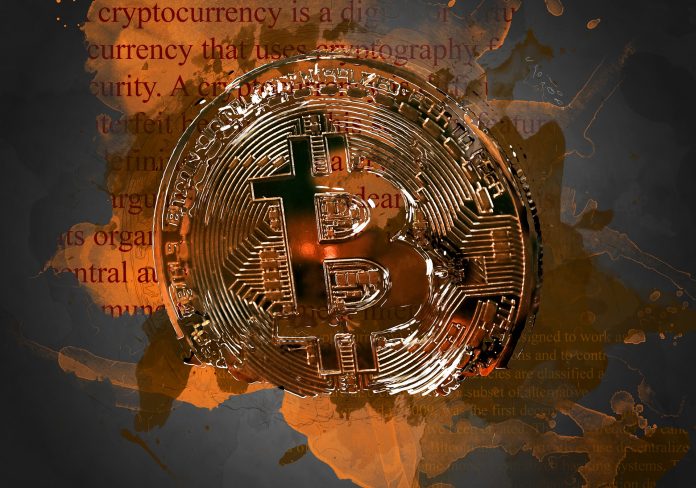There’s one thing a currency is supposed to do that bitcoin never has. That’s maintain a stable value.
Indeed, as investment analyst Eddy Elfenbein points out, bitcoin has gone through four bear markets in 2018 alone. Now, maybe you don’t care if your money periodically loses 20 percent of its value, but most people tend to. They want to be able to afford things whether or not cryptos are having a good day.
Although when it comes to bitcoin, the price changes so quickly and so violently that it really matters what point you’re comparing it to. Over the last year, you see, bitcoin is actually up 91pc, but over the last nine months, it’s down 67pc. That, as you can see above, is why inflation would alternate between being nearly negative 100pc and positive 100pc or 200pc or even 300pc if we measured prices in terms of bitcoin rather than dollars.
Just what you want in a currency!
Why has bitcoin’s price been so up-and-down? Well, part of it is just that it was designed that way. The idea was to create a decentralised system that would let you transfer things online without having to trust a third party like a bank. But the problem was that the only way to do that would be for every member of that network to keep a record of every bitcoin transaction there’d ever been — that way they knew who actually had bitcoin to spend — which would require a lot of computing power.
So much that you’d have to pay them more to do it than you would a bank … unless, of course, the system paid them for you. Which it did by giving newly created bitcoin to whichever one of them could solve a tough math problem that would let them process your transaction first. That’s what is known as bitcoin “mining.”
The question, then, is why anyone would have been willing to get paid like this back when bitcoin was just starting out. And the answer is that they thought bitcoin was going to end up being worth much, much more — and with what seemed like good reason. That was the fact that the number of bitcoin that would ever be created was strictly limited in advance. This finite supply, then, meant that any increase in demand would tend to send prices roaring up.
But even this inbuilt volatility doesn’t fully explain why bitcoin has been on such a roller-coaster ride. Something else must be going on, and that something is plain-old manipulation.
Now, before we get to that, there are two things to understand here. The first is that what makes bitcoin work as a way to transfer things — the expectation that its price will keep rising — is also what makes bitcoin not work as a currency. Why spend $100 worth of bitcoin today if you think it’s going to be worth $1,000 in a not-too-distant tomorrow? You wouldn’t. And people aren’t.
In fact, the total number of bitcoin transactions is down around 20pc from a year ago. Which brings us to the second point: partly due to the fact that there are still so few people using bitcoin, there aren’t that many trading it either. This lack of liquidity makes it pretty easy for just a few fraudsters to push the price up quite a bit. That, researchers have found, seems to be what happened in 2013 on the now-defunct bitcoin exchange Mt. Gox, what happened again in 2017 on the Bitfinex exchange, and what seems to still be happening in 2018 with various pump-and-dump schemes.
None of this makes sense unless you think of bitcoin as a particularly elaborate way to teach libertarians the economic value of trust. The only way to create a financial system without it — that’s what bitcoin aspires to be — is with an enormously expensive Rube Goldberg device of dubious utility and even worse incentives.
There’s a reason, after all, why bitcoin has attracted so many scammers: all its transactions are irreversible. That’s the price of getting rid of intermediaries, like credit card companies that make sure you’re not getting defrauded. All of which is to say that if you steal a bitcoin, you get to keep a bitcoin. That might actually be the top use case.
Bitcoiners think all of this is worth it. That it’s better to have a financial system that is clunkier, costlier, and more vulnerable to attacks than it is to have to trust someone — or, more accurately, to admit that you have to trust someone. Bitcoin exchanges require some measure of it whether they realize it or not.
If bitcoin is the future, then progress is in the past.
–























